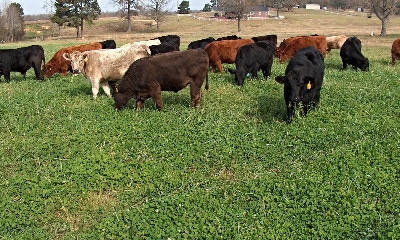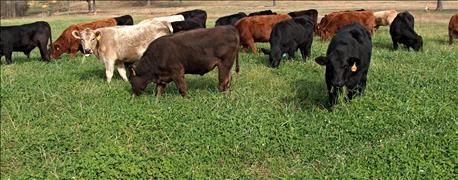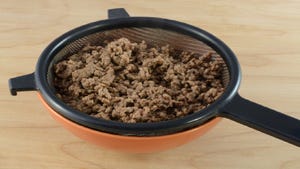
There has been an unusually high number of pasture bloat problems among cattle in southwest Missouri, according to Eldon Cole, livestock specialist with University of Missouri Extension. And several cattle deaths have occurred.
"Some of those cattle deaths were posted by veterinarians, and frothy bloat was found to be the cause," said Cole.
Clover is very evident in most pastures this year. This follows a tremendous amount of common white or ladino clover in 2015.
"Some farmers report the clover is so dense it is crowding out their fescue, ryegrass, and orchardgrass," said Cole.

CLOVER KILLS: Weather has created an abundance of clover in Missouri pastures. However, too much is causing problems for beef cattle producers. Frothy bloat killed some cattle in the state. Take these 5 precautions.
Legumes such as ladino are great to blend in cool season grass pastures especially those based on toxic Kentucky 31 fescue. Clover helps dilute the toxin intake and provides valuable nitrogen for the grass when it is about 25% to 30% of the stand.
Some farmers and extension specialists estimate this year the percent of ladino and white clover approaches 50%, even up to 75% or more.
"Normally with the legume in the 30% range bloat is seldom a concern. However, this spring the super abundance of clover may be too much of a good thing," said Cole.
Cow-calf and stocker operators have not all been affected by the bloat concern according to Cole.
"Anytime death loss occurs producers become uneasy and fear their herd may be the next one to have a loss," said Cole.
There are precautions to follow that reduce the likelihood of bloating, according to Cole. Here are 5 Tips to prevent pasture bloat:
1. Provide hay before pasture turnout. Fill cattle up with dry, grass hay before turning them into a damp, lush pasture with lots of legumes in it.
2. Increase availability of hay. Keep dry hay out where cattle pass by it daily.
3. Watch cattle carefully. Observe cattle regularly and note those that may show bloat symptoms. Some cattle are more susceptible to bloat due to genetics.
4. Provide antifoaming agent. Offer poloxalene containing blocks or feed ahead of turning in to a high-risk pasture and follow instructions closely.
5. Cut hay early. Consider cutting the field for hay if that is an option.
"In spite of these options, there may still be risks, but as warm weather arrives and the clovers become more mature, the risk should subside," said Cole.
About the Author(s)
You May Also Like






